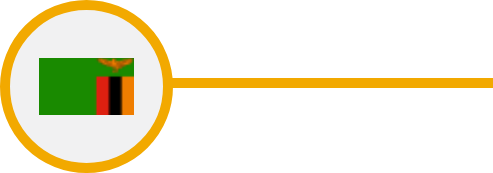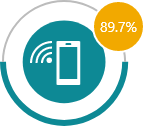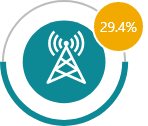BACKGROUND
With an estimated TB incidence of 59,000 (319 TB cases per 100,000 in 2020), Zambia is ranked 21st among the 30 high TB burden countries. (WHO Global TB report, 2021). [1]
In 2020, Zambia reported 40,000 new and relapse cases, with a treatment coverage of 68%. Most of the missing cases are expected to be found in large peri-urban informal settlements of large cities. [3] Based on data from the TB prevalence survey, about 50% of the symptomatic TB cases are missed at the health facility. TB cases are missed at the health facility due to low index of suspicion of TB, failure to complete the TB diagnostic cascade, use of less sensitive diagnostic tools, out of pocket expenditure for patients, low awareness for TB in communities and weak public private coordination. [3]
During the COVID19 pandemic, the TB case notification in Cameroon was impacted and the numbers reduced to lower than 2019 average monthly notification, however, the country soon revived its surveillance practices, and the overall notification trend has improved consistently in the following months.
In 2020, 100% percent of the new TB cases were tested for rifampicin resistance. [4]
The National Strategic Plan (NSP) for TB prevention, care and control 2022-2026 envisioned a TB-free Zambia by 2030. More specifically, by providing equitable access to cost-effective, high-quality TB services, and reducing the number of TB deaths. The NSP prioritizes finding the ‘missing cases’ to bridge the case detection gap; enhancing diagnostic services; expanding programmatic management of DR-TB; enhancing TB/HIV collaboration; scaling-up of TB preventive therapy (TPT); and strengthening multisectoral and community partnerships. [4]
Currently, Zambia is relying on routine surveillance data from health facilities collected through the NTP in manual paper-based formats, to measure progress towards TB control targets. This data is further aggregated at the district level and entered nationally in the DHIS2 platform. This data has limitations such as under-reporting, and it does not provide information on the number of undetected cases in the community and on those individuals seeking care outside of the public sector. This combined with HIV pandemic and poverty in the country also contributes to the high TB burden in the country. [5]
Zambia has pledged to achieve UN high level key TB targets and has taken some significant steps towards it. The National TB program is committed and willing to transition from an aggregate based TB notification system to a case-based TB notification system. Under its revise NSP (2021-2026), the NTP is aiming to build a comprehensive, integrated and interoperable digital platform.
The NTP is leveraging on SmartCare digital platform that were primarily developed for HIV programs (in 2007) and now is integrating them with TB services. Systems like DISA is being used at the labs for recording TB test results. Over the time NTP has upgraded its country servers and is investing in new age digital technologies to streamline national rollout of advanced web-based version for TB notification.
With changing times and recent surges of COVID-19 pandemic, disease surveillance and response systems has become central and critical to inform operational and strategic decision-making for multi-level health systems. Ongoing health systems strengthening, and patient-centered engagement strategies are needed at every step of the care cascade; however, scale-up of active case finding strategies is particularly critical to ensure individuals with TB in the population reach initial stages of care. Additionally, a renewed focus on PLHIV and individuals with drug-resistant TB is urgently needed to improve TB-related outcomes in Zambia.
Based on the multi-stakeholder discussions, interviews and independent research, and guidance from the National TB Program, this assessment report attempts to produce clear recommendations and way forward towards developing a comprehensive case-based TB surveillance system while leveraging the existing infrastructure, in-house capacity and assets. Detailed recommendations are provided in the later section of this country report.

STATUS OF CASE BASED TB NOTIFICATION
National TB program has been implementing DHIS2 as the tool for TB surveillance:
✓ DHIS2 based aggregated data collection system which is being used at all 116 districts in Zambia. Typically, the manual TB registers are sent to the district office where the district data entry operator then feeds the data into the DHIS2 system.
The data is entered on a weekly basis in the current system and a monthly report is generated which are being accessed used at district, provincial and national program managers.
In line with country’s vision outlined in the NSP 2017-21 to establish an electronic case-based data recording system, the HMIS is undergoing a transition to integrate the complete cascade of care by using a DHIS2 tracker data model.
Currently, aggregated TB datasets only capture cases initiated on treatment. The tracker model will expand this to register all patients, including presumptive TB cases.
In 2010, Zambia introduced SmartCare electronic health record system, which was implemented for monitoring HIV cases, and the same is now being expanded for TB services by adding TB modules to the system. The primary intent of this system is to associate each patient record with a unique identifier and and ensuring case-based data collection at the facility level on a timely basis. Patients are issued smart-cards at their initial consultation which contains all their clinical information and treatment details and can be accessed from any SmartCare facility. Smart care system help in avoiding de-duplication of the cases and improves the ability of tracking and monitoring of cases in their TB treatment journey.
NTP has already piloted Smart Care TB module online version in 10 facilities and offline desktop version in 50 facilities.

ELECTRONIC TB NOTIFICATION DATA COLLECTION AND USE
| TARGET | CURRENT SCALE | COLLECTION TOOLS | DATA TYPE | DATA USAGE | |||
|---|---|---|---|---|---|---|---|

National Level
|
Data Not Collected from this level
|
DHIS2 dashboard | |||||

Provincial
level
|
10 | Data Not Collected from this level | DHIS2 dashboard | ||||

District Level
|
116 | 116 | Excel sheet, DHIS2 (in place but not used effectively) | Aggregated | DHIS2 dashboard | ||

Facility
Level
|
3113 | 597
50 10 |
Excel sheet
SmartCare-TB offline module Smart Care-TB online module |
Aggregate
Case based Case based |
Data is not used at this level | ||

Community Level
|
Data not collected from this level | ||||||

CASCADE OF CARE MONITORING
PRESUMPTIVE SCREENING
TB Testing
Treatment Initiation
Treatment Monitoring
Treatment Outcome
Contact Tracing






| KEY DATA VARIABLES | Yes/No |
|---|---|
| Demographic details (Age, DOB, Gender) |
|
| Address and contact details (Country, Division, District, House address) | |
| Geolocation (GPS coordinates of the household) | |
| Contact details (Phone number/Mobile number, WhatsApp, Email etc.) | |
| Health Facility address |
|
| Type of health facility (Public, Private etc.) |
|
| Site of TB (Pulmonary, Extra-pulmonary) |
|
| Type of diagnostic test (Microscopy, GeneXpert, TruNaat, CXR, etc.) | |
| Date of test result | |
| Drug susceptibility (DSTB, DRTB) |
|
| Treatment Regimen |
|
| Treatment start and end date | |
| Co-morbidity (HIV, Diabetes, COVID-19 etc.) |
|
| Treatment monitoring | |
| Treatment outcomes |
|
| KEY INDICATORS | Yes/No |
|---|---|
| Presumptive screening (proportion) | |
| Treatment initiation (proportion) |
|
| Treatment monitoring/adherence | |
| Treatment outcome (proportion) |
|
| Spatial distribution of TB notification | |
| Age-group & sex wise aggregate numbers and proportions notified |
|
| Basis of diagnosis wise aggregate numbers and proportions notified |
|
| Type/site/drug resistance wise aggregate numbers and proportions notified |
|
| Provider source-wise aggregate numbers and proportions notified |
|
| Comorbidity wise aggregate numbers and proportions notified |
|
| Key-population wise aggregate numbers and proportions notified |
|
| Estimate/Target wise notification/treatment coverage (proportions) |
|
| Provider-type disaggregated treatment outcomes (proportions) |
|
| Comorbidity disaggregated treatment outcomes (proportions) |
|
| Key population disaggregated treatment outcomes (proportions) |
|
 Digital
(aggregated)
Digital
(aggregated)
STATUS OF ELECTRONIC CASE BASED TB SURVEILLANCE
Electronic System For Case Based TB Notification
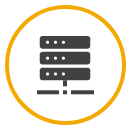
At 597 TB facilities,
aggregated DHIS2 system
available
Smart care TB module is
under pilot in 10 facilities for
case based data
Lowest Unit For TB Notification Digitisation
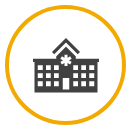
District level DHIS2
aggregated data
Smart care piloted for case
based TB notification from
facilities
Stage Of Notification

Bacteriologically positive TB confirmation at Labs
Level Of Access And Use Of TB Notification Data
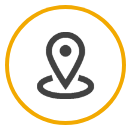
District level
Private Sector Notification

Providers under SLA -
Direct access to DHIS2 ,
Others - Manual
notification using excel
sheets
Frequency of digitization of TB notification

Monthly
Mode Of Follow-Up With Notified Cases
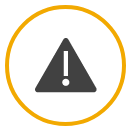
Manual follow-up-household visits
Scale Of Implementation
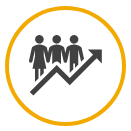
DHIS2 aggregated system is scaled at National level
Contact Tracing For TB Notified Cases
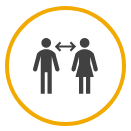
Aggregate number of contacts captured in DHIS2
Multi-Channel Enablement

DHIS2 web application, Desktop app of SmartCare
Govt. order for mandatory TB notification

Mandatory case notification Govt. notice was passed for both private and public providers in 2000
PRIVATE SECTOR NOTIFICATION

Overall, there is a limited involvement of private pharmacies and providers in TB service delivery.
From the centers that have the capacity to deliver TB services, some have access to DHIS2 aggregate platform (through a formal agreement) and enter data directly, while others submit data to the district level in excel sheets (like the one used from public facilities).
COUNTRY IT CAPACITY
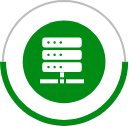
Country Server
Servers are managed by the Ministry of Health
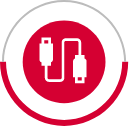
Interoperability
DHIS2 as platform provides interoperability but yet to be integrated
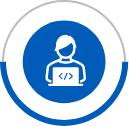
Country IT team
DHIS2 system has been developed and managed in-house by IT team of MoH
CURRENT RESOURCES AVAILABLE
FY2020 budget of USAID for Zambia allocated USD 5.5 Million for supporting the TB program in Zambia.
For the year 2020-22, Global Fund has granted USD 16,568,354 for the country.
The MoH has further developed a comprehensive Health Care Financing Strategy for 2017-27 to give direction to their various initiatives.

MILESTONES ACHIEVED AND ROAD MAP
2016
Development of DHIS2 TB module for capturing excel aggregated data
2018
Data captured on paper based tools manually
2019
TB module was upgraded and enhanced
2020
DHIS2 dashboard was developed for TB- used upto District level
2021
Development of SmartCare desktop system to pilot Web Based SmartCare for TB
2022
Development of SmartCare desktop system to pilot Web Based SmartCare for TB
2023
Expanding the SmartCare to the entire cascade of care- Presumptive screening, testing, treatment initiation, treatment monitoring, outcome. Integration of Contact tracing module
2024
Real-time access to case-based TB data

OTHER COMPLEMENTING DIGITAL TOOLS
| Purpose | Tools | Channel | Developed By | Supported By | Scale |
|---|---|---|---|---|---|
| Digital Adherence | Nill | ||||
| Logistic Management | eLMIS | Web Application | Ministry of Health | USAID, CDC | National Roll out l |
| Laboratory Information Management | DISA (connected to GeneXpert) | Web Application | MOH | USAID, CDC PEPFAR, Global Fund | Pilot |
| DataToCare | Web Application | USAID | USAID | Application is not functiona | |
| Community Led Monitoring (CLM) | Nil | ||||
| Contact Tracing | Nil | ||||

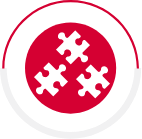

KEY CHALLENGES

Real Time access to data: With only aggregated TB notification data being entered at district level (weekly basis), there is a delay in getting access to program data to take actions.

Data Quality, Duplication and Under reporting: Due to paper-based reporting at the facility level, there is always a risk of duplication, under reporting and data loss.

Infrastructure and training: For Zambia to enable a fully functional case-based TB notification system, provisioning of digital infrastructure, training and capacity building remains to be a bottleneck.

Integration of DISA with TB notication system: To fully utilize the potential of using technologies like GeneXpert, DISA system integration with the case-based TB notification system (SmartCare) is critical.

NTP VISION
- ❖ The National Tuberculosis program is committed to UN High Level TB Targets. To achieve this, Zambia has built up its National servers and IT capacity to host applications. Now it is working towards developing a robust and comprehensive real time case-based TB notification system.
- ❖ In order to get all data reported in a single case-based data repository, scale up of SmartCare implementation to all TB facilities is crucial.
- ❖ Developing a mobile based real-time case-based TB notification at the lowest unit. Leveraging on existing technologies and Innovations. Zambia is investing in Smart Care digital platform that was built for HIV cases and now is expanding it to TB care and services.
- ❖ Monitoring of entire cascade of TB care starting from presumptive case screening in order to ensure end to end TB case treatment and management.
- ❖ Extending case-based reporting to the private sector is also included in the plans of NTP.

RESOURCES NEED
Based on multi-stakeholder discussions, country feedbacks and recommendations for full-filling country’s vision, we have put together an estimated investment requirements and areas needing support for provisioning of a comprehensive case based digital TB surveillance system
Hardware and Infrastructure :

Mobile Devices (for data collection): Zambia has 3116 facilities and to provision mobile device for every facility for case-based TB surveillance, USD 467,400 will be needed assuming USD 150 per mobile devices.

Tablet (for data use): Zambia has 116 districts and 10 Provinces and to promote active data use, each district and region should be given a tablet which would cost roughly around USD 25,200 assuming USD 200 per Tablet devices.

Internet: In case WiFi is not available in each facility, then mobile internet cost of around USD 311,600 should be considered (assuming USD 100 mobile data cost for the entire year per facility, district and regional user).

Server: Based on the current volumes of new cases, Zambia would need an investment of USD 20,000-30,000 for next 3 years for server and server maintenance.
Note: Existing devices available through other health programs can be leveraged. In that case, the above-mentioned costing can be accordingly considered.
Software Development :

Based on various multi-stakeholder meetings and given the fact Zambia already have a strong foundation for DHIS2 aggregated system for TB, around USD 250,000-400,000 should be budgeted for a comprehensive TB surveillance system and analytical dashboard for data use.
Capacity Building and Implementation :

After the software development, a dedicated pool of technical resources will be needed to support platform administration, data management and support. A team of 4-6 skilled resources attributing to a cost of around USD 48,000-72,000 per annum should be budgeted (or USD 144,000-216,000 for 3 years assuming USD 1,000 per month per resources). Additionally, reskilling of the current IT team should be budgeted.

Training: This would involve training material development and onsite and remote training of the trainers. Training sessions should be planned for each of the 116 districts, which could cost roughly USD 100 per district, amounting to USD 11,600 which will be further supported with e-Learning packages. Also, a dedicated trainer should be budgeted in case there is none.
TOTAL investment of around USD 1.5 – 2.5 million for 3 years will be needed on developing a comprehensive case-based digital TB surveillance system for Zambia.
Disclaimer: The above budget is a function of number of facilities, districts and regions and expected volume of data. This only provides a ballpark figure of what is needed in terms of budget.

Recommendations
Following are some of the key recommendations suggested based on the findings of this assessment of country’s digital ecosystem and infrastructure:

Strategic Costing Plan
As a first step it is important for the country to create a comprehensive costed action plan for development, implementation and scale up of the TB case based surveillance system.
Based on NTP’s vision and the recommendations for improvements, the plan should clearly define targets with actionable interventions and funding requirements supported with a detailed work plan along with timelines. The plan will help the country to assess and monitor the progress to ensure that any risks can be duly mitigated.
Tentative timeline: Month 0-1

Implementation and scale up of case-based notification system on priority
In line with country’s vision outlined in the NSP 2017-21, Zambia has already piloted SmartCare electronic case-based TB notification system online version in 10 facilities, and prior to that, the country has already rolled out SmartCare services for HIV cases successfully. Leveraging on the existing infrastructure in terms of database and deployment for Smart Care can lay a strong foundation for executing the vision of creating a comprehensive and integrated real-time case-based TB surveillance and notification system.
For this, the SmartCare system is desired to be implemented across all TB facilities and customized in line with the national TB treatment guidelines. This case-based notification system must accommodate components of monitoring of entire continuum of care for both DS TB and DR TB patients, starting from presumptive screening, referral, testing, treatment initiation, treatment adherence, treatment outcome and contact tracing in real-time.
The solution architecture should support adding all the above components in phases supported with versioning to ensure seamless upgrades and continuity.
Tentative timeline: Month 0-12

System Integration
As visioned by the national TB program with the concept of an integrated Health Information Management System (HMIS), leveraging the current platform and foundation, basic integration and data exchange mechanisms should be worked out to avoid duplication of efforts and complement the existing data systems.
The current SmartCare platform infrastructure needs to be extended to support integration with national DHIS2, DISA system (GeneXpert), TruNat, Digital X-Ray outputs, Pill boxes and other adherence tools which help in using the data effectively for the patient continuum of care as highlighted by the National program.
Recommended exchange / ETL tools like Talend , Informatica which include these features make the data management task much easier and simultaneously improve data warehousing. [8.1] , [8.2]
The DHIS2 platforms architecture is easily compatible with these standard tools and processes making this an effective solution. [9] The data exchange process should follow and comply with FHIR , GDPR standards for more secured and seamless data exchange.
Tentative timeline: Month 6-18

Mobile app
NTP also envisages the need to simplify the data collection processes to enable robust data analytics and data use. Some of the activities include:
Inconsistent internet connectivity/network issues majorly hinder the data reporting. One effective way to overcome this is to support the current data collection processes by introducing a mobile application which will make the data entry process easier and will have features to store data offline which can then later be synched with the central systems.
The advantages for a mobile application include better performance, effective use of device features like in house system updates, usage of location, security measures and tracking user patterns and issue log mechanisms and other analytics measures.
The mobile application should be easily extendable to the current framework to support and ensure that the data structures are consistent and there is minimum effort to support any updates / changes to the program.
Additionally, the mobile frameworks using open source and standard technologies like Java, Postgre, React and Android, that are easily ( java , react ) supported by country IT teams will also have the standard best practices of mobile development like version management, data encryption, etc and will make this a more robust solution. [10]
Apart from the standard mobile / web interface there would be other sources of data collection, which include spreadsheets , csv , other apps that would need to be standardized and integrated with the existing DHIS2 aggregate and smart care system.
To ensure that there is a seamless integration from multiple channels without any data loss, the DHIS2 data transformation API also offers creation of standard templates which can be easily mapped with external data collection tools, apart from this, it supports batch upload for large volumes to ensure minimum disruption to the live systems. [11.1] , [11.2]
Tentative timeline: Month 0-6

Data Quality
NTP clearly emphasizes on the importance and need to improve data use and improving the data collection practices. As part of standard practices, the application(s)/solutions should follow the data quality mechanisms or the Data Quality Assurance (DQA) framework which would help in improved data use.
Data access control is another DQA measure that will regulate user’s access to meta-data. It will involve the principle of least privilege (POLP), i.e., user’s access will be determined based on their role in the project. POLP will define and limit what data they have access to and who has that access.
The training component of the application will also come with an e-learning package that should have a module on DQA and will support routine annual and periodic independent assessments of reported data.

Advanced dashboard analytics
To strengthen the current Monitoring and Evaluation framework, it is recommended to build on the current visualization modules. To offer a comprehensive dashboard for reviewing of program and data indicators, additional features of pivot table, event reports, etc, which support dimensions, data aggregation reports and individual line lists and with timeline views are extremely useful.
Once a robust data analytics and data use model has been established with the current systems, then a more advanced analytical dashboard should be designed linked to the SmartCare case-based TB surveillance system that is already being piloted.
To achieve this , apart from the standard dashboard features (and to strengthen and expand the data visualisation scope and making effective use of data for predictive modelling), data science and advanced analytics tools are recommended, like Tableau , Power BI, etc, which offer these features.
Based on the discussions, the current platform offers APIs which can be connected for these applications and be used as an extended analytical component of the data analysis framework.
Tentative timeline: Month 6-12

eLearning module for health staff
To address the challenges with periodic training of facility level staff to orient them on using DHIS2/Smart care system for direct data reporting, the MOH must engage in development of a comprehensive eLearning module for app training.
Any national scale roll-out will have its own capacity and training challenges which requires development of a comprehensive eLearning module allowing all health staffs involved in data collection process for training not only on the eTB manager application but also on the latest manual of procedure and continued medical education on TB care.
While DHIS2 offers standard training modules on the application , training tools like Moodle [12] built on standard LMS framework can be reviewed for application rollouts.

Device Procurement
One of the limitations highlighted by NTP is the need to improve the data collection processes at the facility level. To streamline this, procurement, distribution and maintenance of the required data entry equipment like laptops, mobile/tablet devices should be done on an urgent basis. Improving the current infrastructure at the facilities is crucial for a complete transition to digital notification.
Tentative timeline: Month 0-6

Capacity building for application upgrade and server maintenance
One of the main challenges highlighted by the NTP is the ongoing maintenance and enhancements of the platform. Since the application requires regular updates and to ensure effective adaptation and scale up the system support team requires trained personnel on DHIS.
Strengthening the NTP team with trained system administrators will help in reducing costs (in seeking technical support) and improving and expediting the planned implementations.
Tentative timeline: Month 6-24

Strategic Technical Recommendations
Application Upgrades including Server Augmentation & Infrastructure Upgrades : To make sure that systems implementation and scale up of application is supported well, the key need is to have a long-term strategic plan that would cover the technical and operational objectives.
The strategy recommended would cover the following core areas
✓ Technical Upgrades: Based on the architecture, the upgrade would be done with the database, a middleware system, the operating system or the hardware.
Additionally, the architecture should support the integration layer which would be needed for data exchange with other national/ external systems. The technologies that need to be brought in and the areas of inter-connection need special focus. Recommended data system architecture would include updating the version of the current DHIS2 to 2.34 which offers better features on data management , encryption , data exchange standards.
Additionally, the advance admin features offered by this version help the administrators to support the operational needs better for onboarding users , real time change in data variables and user management etc effectively.
Apart from this version 2.34 also supports compliance to GDPR standards and offers more controlled data encryption practises. [13]
✓ Performance Optimisation & Testing : To support the national scale up and implementation strategies it is very essential to have system(s) and application testing done to enable a reliable platform and which also helps in architecture updates and augmentation.
While core teams from the user community who are involved in the testing learn and automatically get trained, Automated System and Application Testing tools like Selenium and Appium can be used. Load Testing tools which helping in data base sizing and planning need to be adapted for effective planning. [14.1], [14.2]
Application & System Security Audit: To strengthen the current systems framework and ensuring long term sustenance it is important to have regular evaluation of the security of the information and systems by measuring how well it conforms to an established set of criteria.
These would also include developing a framework which should outline policies in line with recommended standard policies like HIPAA [15.1], [15.2] to cover Patient Data Management and Server & Infra guidelines.
Apart from application measures offered by DHIS2 [16] for patient data security , hosting solutions offered from Azure also cover these as part of their deployment options which can be considered as part of systems hosting. [17]
ACKNOWLEDGMENT
We thank the National TB Program Manager Dr. Patrick Lugnu and the entire team for participating and engaging in the assessment. We would also like to extend our gratitude to Rhehab Chimzizi and Mushota Kabaso for providing valuable insights into Zambia’s vision for creating a comprehensive case-based TB surveillance and notification system.
CONTACT DETAILS
National Tuberculosis
Control Program
Directorate General of Health Services
Mohakhali, Dhaka, Bangladesh
Telephone : +880 28816459
Email : info@dghs.gov.bd
REFERENCES
- Global tuberculosis report 2021: https://www.who.int/publications/i/item/9789240037021 .
- Active TB case finding in a high burden setting; comparison of community and facility-based strategies in Lusaka, Zambia: https://www.ncbi.nlm.nih.gov/pmc/articles/PMC7482928/pdf/pone.0237931.pdf.
- The Prevalence of Tuberculosis in Zambia: Results from the First National TB Prevalence Survey, 2013-201 https://pubmed.ncbi.nlm.nih.gov/26771588/.
- Zambia Tuberculosis roadmap overview, Fiscal Year 2021: https://www.usaid.gov/sites/default/files/documents/Zambia_TBRM21_TB_DIAH_Version_Final.pdf.
- Tuberculosis care cascade in Zambia - identifying the gaps in order to improve outcomes: a population-based analysis: https://bmjopen.bmj.com/content/11/8/e044867.
- Data Report, Digital Data 2021: Zambia: https://datareportal.com/reports/digital-2021-zambia?rq=zambia
- Accelerating Digital Transformation in Zambia: https://openknowledge.worldbank.org/bitstream/handle/10986/33806/Accelerating%20Digital%20Transformation%20in%20Zambia.%20Chapter%202.pdf?sequence=7&isAllowed=y
- System Integration Tools ( Talend , Informatica ) : https://www.talend.com/index.php, https://www.informatica.com/
- DHIS2 Communities on DHIS2 using GDPR guidelines : https://community.dhis2.org/t/how-does-dhis2-protect-personal-information-the-tech-details/5335",
- DHIS2 Mobile App : https://dhis2.org/android/
- DHIS 2 API & DHIS2 Data Transformation Services : https://docs.dhis2.org/en/develop/using-the-api/dhis-core-version-235/web-api.html , https://docs.dhis2.org/en/use/user-guides/dhis-core-version-236/maintaining-the-system/importexport-app.html
- Application Training Tool : https://moodle.org/
- Features of DHIS 2.34 : https://dhis2.org/overview/version-234/
- Performance Tools ( Selenium , Appium ) : https://appium.io/, https://www.selenium.dev/
- HIPAA Compliance Framework : https://www.hhs.gov/hipaa/for-professionals/security/laws-regulations/index.html, https://www.hipaajournal.com/considered-phi-hipaa/
- DHIS Security : https://dhis2.org/security/
- Azure Hosting Services : https://docs.microsoft.com/en-us/azure/compliance/offerings/offering-hipaa-us
